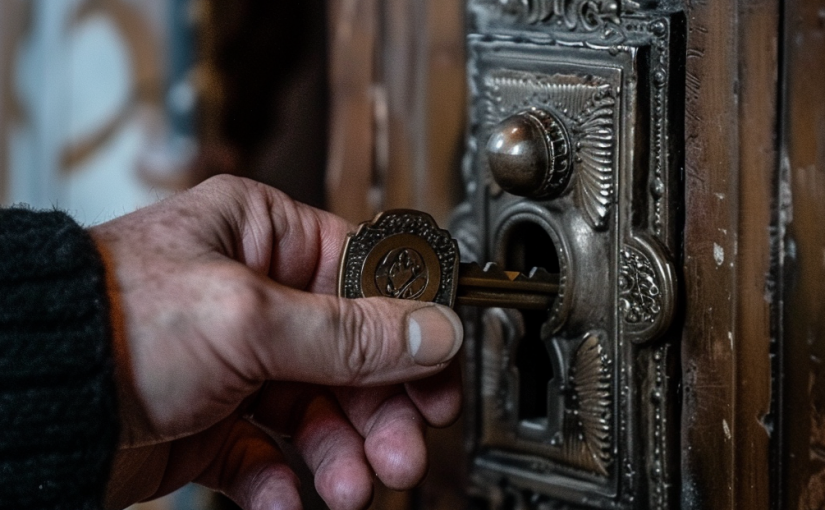To progress and achieve new goals, we must let go of old mindsets, habits, and behaviours that no longer serve us.
Holding onto our past experiences and some historical knowledge can hinder our growth and keep us stuck in familiar but unfulfilling behavioural and mindset patterns. As one evolves and matures and takes on new challenges, one should adapt one’s approach accordingly.
As the saying suggests, trying to use the same “keys” from the past to unlock the doors of the future can be very frustrating and even futile.
To open new doors of opportunity, work, and endeavour, one must be willing to sometimes embrace radical change and embrace new ways of thinking and acting. This may require completely unlearning some of our old and potentially limiting beliefs about ourselves, those around us, and their and our potential. We should not let yesterday’s experiences and mindset dictate today’s possibilities.
Discarding the “dead weight” of a bunch of old keys that jangle our lives, creates cognitive and emotional space for the new keys we need to succeed. This discard could mean breaking old habits, ending toxic relationships and associations, or adopting a fresh perspective.
This all takes work, but the potential rewards in terms of personal growth and new opportunities often make it very worthwhile. The key is to focus on the new vision you have for your life, and take small daily actions to make it a reality.
Swapping out unproductive habits for ones that serve your goals with growth integral to your mindset, accompanied by a consistent effort can often open doors to a better future.
To embark upon this change is not easy, but it may well be necessary for your growth and to release you from being stuck in a rut or dissatisfied with your current circumstances. If these characteristics encumber your daily life, then it’s a sign that it’s time to let go of the old and embrace the new.
It’s important to take an honest look at one’s life and identify the areas that need improvement. Dead-end job, unfulfilling relationship, bad habits? Once we pinpoint the issues, we can start to develop a plan for change.
Letting Go
One of the biggest obstacles to change is our attachment to the past. Humans by their very nature are mostly nostalgic and sentimental.
Nostalgia is such a common human experience, with most people reflecting on the past as often as once a week, according to some studies. This involves sentimentally longing or having an affection for the past, typically for a period or place with happy personal associations. This is often triggered by something reminding an individual of a positive experience from the past, such as songs, smells, photographs, or loneliness. Often it is characterized by bittersweet or even painful memories of the past.
The most nostalgic of us do tend to have certain personality traits, such as daydreaming frequently, being sentimental, overthinking, romanticizing the past, and not liking change. Nostalgia peaks during transitional age ranges like the teens through 20s and over 50. This nostalgia can have both positive and negative effects, positively boosting one’s mood, increasing self-esteem, providing a sense of social support, and helping one cope with difficult life transitions. Excessive nostalgia and dwelling too much on the past may have corrosive negative consequences.
We may cling to old habits, relationships, or beliefs because they feel comfortable and familiar. However, this attachment can prevent us from moving forward and reaching our full potential. It’s important to acknowledge that the past is gone and that we can’t change it but what we can change is our perspective on it.
Instead of viewing the past as a burden, we can see it as a learning experience that has shaped us into who we are today. Letting go of the past, we create space for new opportunities and experiences. We free ourselves from the weight of old baggage and can focus on the present moment and the future.
Growth and Rewards
To open new doors in life, we need to adopt a growth mindset.
This means embracing challenges, learning from mistakes, and continuously striving for improvement.A growth mindset allows us to see obstacles as opportunities for growth rather than roadblocks. When we face a challenge, we can approach it with curiosity and a willingness to learn rather than fear and resistance.Developing a growth mindset also requires us to be receptive to feedback and criticism despite it being hard to hear and accept. That feedback can provide valuable insights into areas where we can improve and inform our growth, we can accelerate our progress and open new doors more quickly with new keys.
Change is tied to action, so it’s not enough to simply think about the changes we want to make; we need to take concrete steps to make them happen – one way is with setting clear goals for ourselves. Understanding where we want to go and what we want to achieve. Understanding what we think success looks like. By setting specific, measurable goals, we can create our own personal roadmap for growth to help us stay focused on the path ahead.
Another important action is to develop a support system; seeking out supportive friends, family, or mentors who can make a difference in terms of providing emotional support and perhaps other kinds of support too. These people can provide encouragement, advice, and accountability as we work towards our goals.
Finally, it’s important to celebrate one’s progress and successes along the way; since change is a journey, it’s important to acknowledge the small wins that keep us motivated and inspired and celebrate our achievements, from which we can build momentum and stay focused on the bigger picture.
